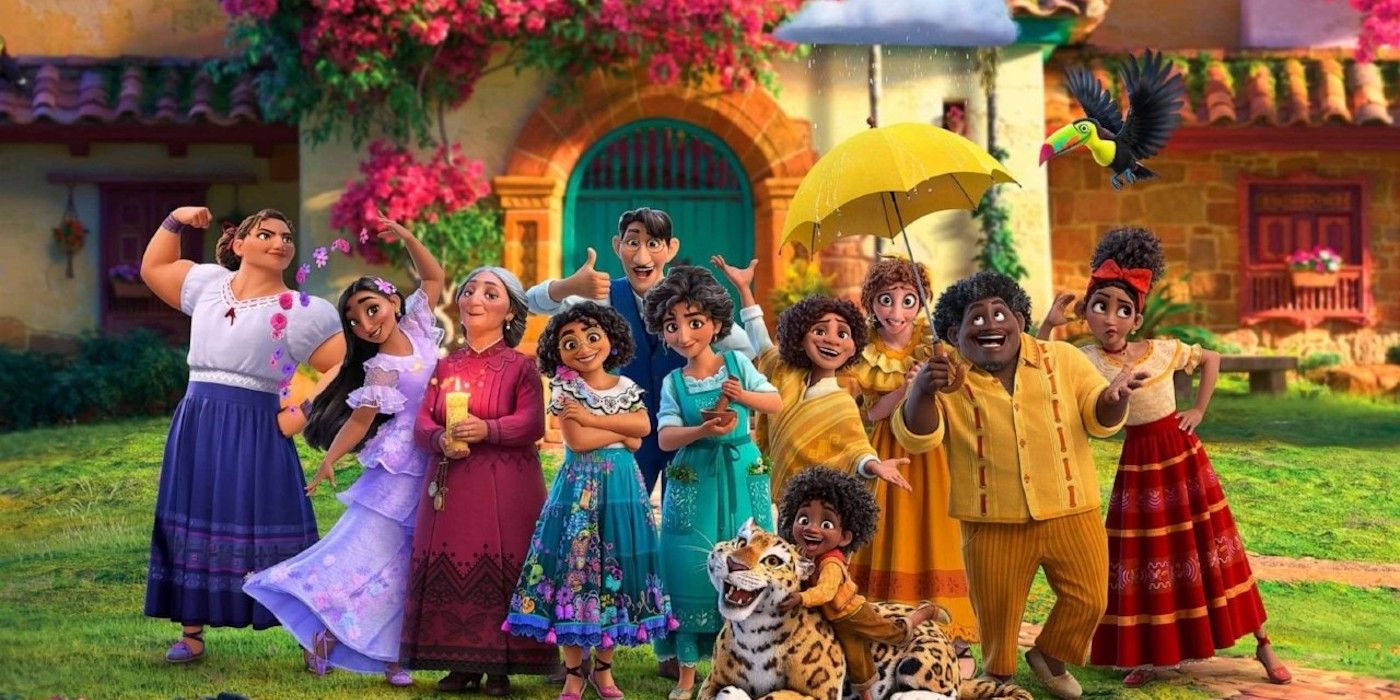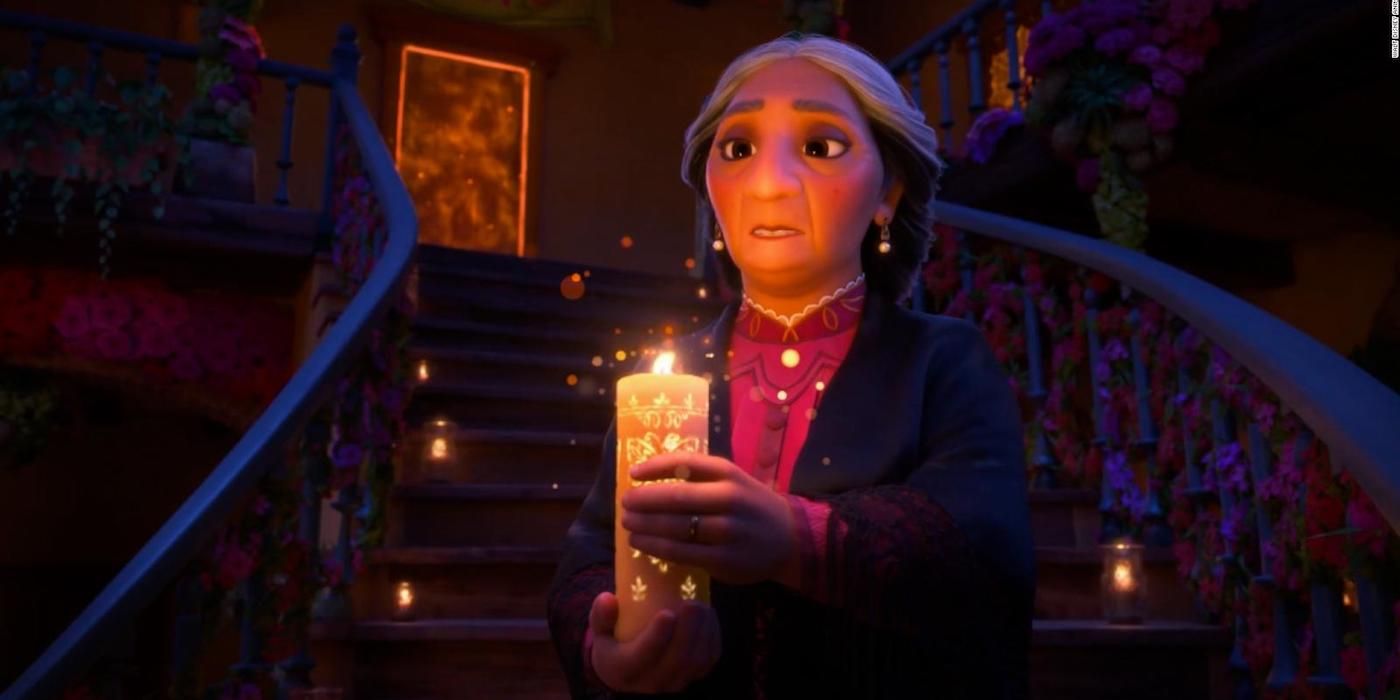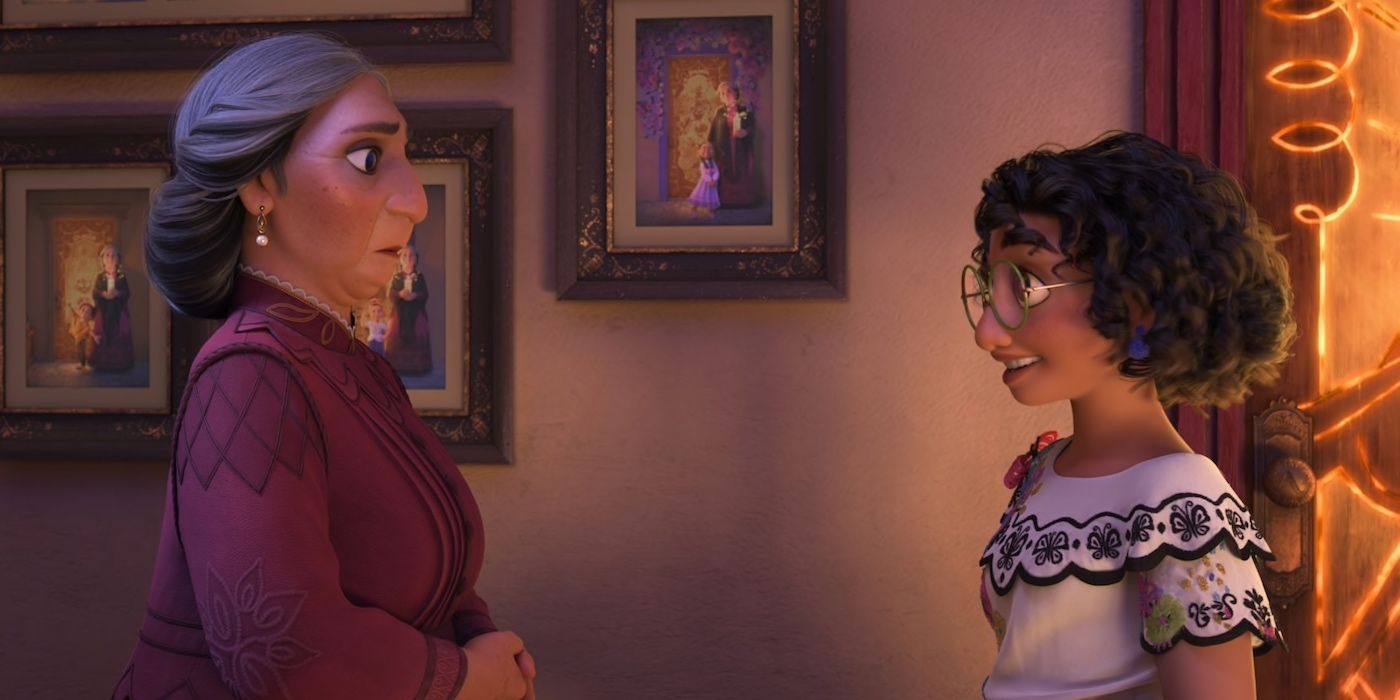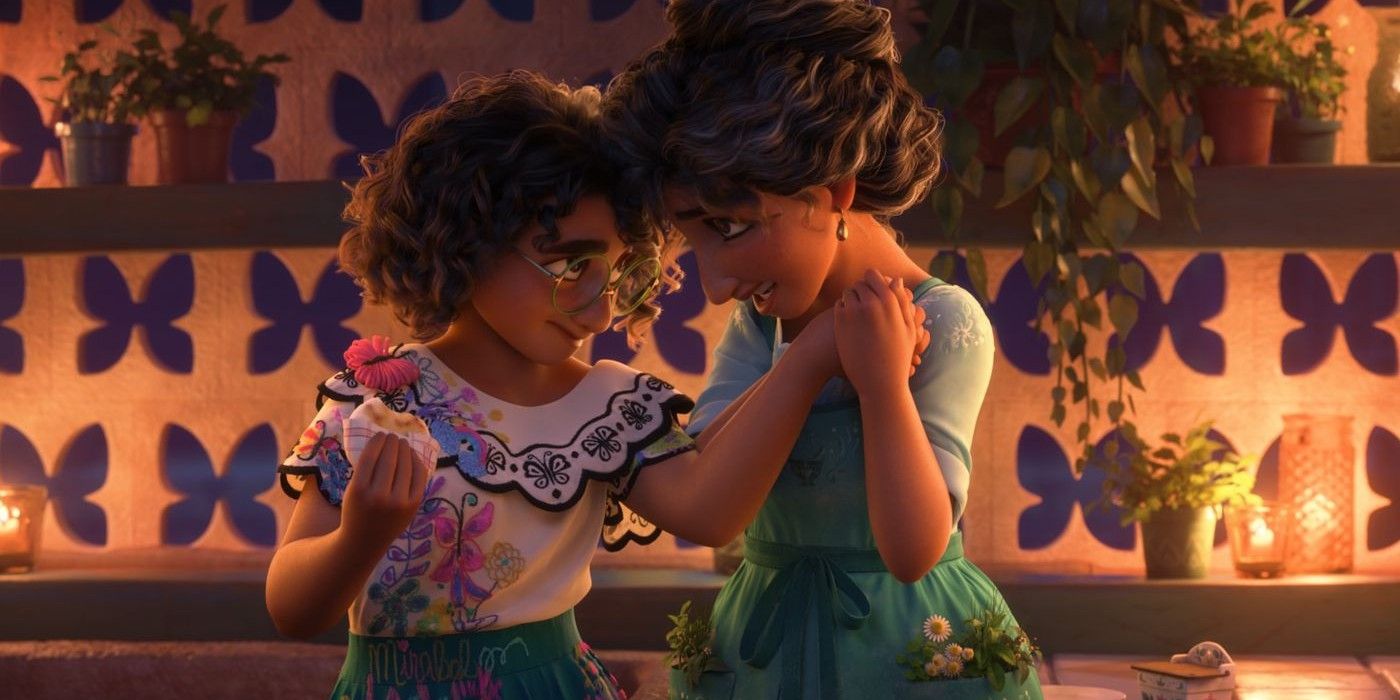WARNING: The following contains spoilers for Disney's Encanto, in theaters now.
Encanto follows in the tradition of other lavishly rendered films from Walt Disney's Animation Studios steeped in thoughtful social commentary, like Zootopia and Frozen. Detective Judy Hopps and swindler Nick Wilde delve into conversations about the real world harm derived from negative racial stereotypes while Elsa serves as a complex leading character in tandem with her sister Anna and her male sidekick Kristoff. Each redefined the social commentary expectations of animated children's stories and Encanto takes it one step further.
Assistant Mayor Bellwether tried to upend the caste power dynamics by creating chemically induced false accusation scenarios and Prince Hans of the Southern Isles fails at attempted regicide. Disney's latest thought-provoking fable does away with a traditional antagonist altogether and offers something much more nuanced and tragic. The true villain of the story is generational trauma and the ways in which coping mechanisms can fail and leave a family broken, despite their best efforts at moving beyond the scars of their past.
Before the film even begins it queues up the emotional harmonies for its thematic dynamics. A short film called Far From the Tree precedes the feature, diagramming an encounter between a pair of raccoons who are father and son, foraging the beach for clams. The film delivers a snapshot of how generational trauma is reinforced and inherited, without using any dialogue. The audience witnesses a father who loves his son so much that he can not allow him to come to any of the familiar harm from his own past and is willing to sacrifice his relationship with his child in the process. Only leaving the son frightened and disconnected and the father disappointed and bitter, at the world and himself, for not being able to live up to his own unreasonable standard. The son breaks the cycle by allowing the present to live outside of the shadows of his or his father's past, and the feature film captures synergy within this commentary.
As Encanto opens, Alma and Pedro Madrigal are escaping from a war-torn city with three infants in tow when a group of armed men in silhouette catch up to them and their fellow migrants while fording a river. Pedro buys time for the others by stalling the advancing quartet on horseback, resulting in his death and also the mystical fulfillment of their family's deepest wishes. A home ripples into existence spreading from the magical locus, a single candle with an ever-burning flame and the source of the magic that the Madrigal's will inherent.
The film never delves too deeply into the circumstances surrounding the world where the two initially meet. There are flashbacks showing times of peace and shared moments together when the turmoil that would later engulf them seemed far away, but at some point after the birth of their triplets, there are fires in the streets just outside their window. No time is spent on describing where they are going either as the only true destination seems to be a nebulous sense of somewhere safe, wherever that may be, and the willingness to drop out of their lives in the places where they were presumably born, to get there. Their flight is made all the more significant because it is clear that they did not make this decision in isolation, because there are many families who have made the trek with them. It is important to remember that this trauma precedes the death of Pedro and compounds it into a knot of amplified anguish.
Though the creators of the film have disclosed that the Encanto takes place in the mountains of Colombia, in a lot of ways it does not matter. Embracing the specific cultural tones and tenor are valuable and the film does an amazing job of communicating the experience of a real family and not generic set pieces, but for its larger conversation about displacement and occupying a safe space for the health of one's family, it could be anywhere in the world where migrants are leaving the certainty of one dilemma for the uncertainty of dangerous hope. Encanto challenges the collective premise of safety by depicting a miraculous communal environment predicated on illusions of control and the resulting diminishment of self-worth.
The matriarch of the family, whose three triplets have become parents themselves, have all prospered with blessings that span both the magical and social landscapes but at the cost of their internal cohesion and mental health. Alma is the closest thing the film offers as a physical villain, but the term is far too unwieldy to suit her because in truth she is the film's first victim. The ongoing rawness of her husband's loss has hardened her to the small losses she willingly sacrifices, including the presence of her own son, to preserve what she understands to be the canopy of security that those sacrifices demand. She cannot allow herself to mourn her missing child or the granddaughter that she has marginalized because the terrors beyond the mountain may still be there to swallow them all, and she does what she thinks she must to keep them at bay.
The secret to keeping the magic alive that has sustained them through all these generations is essentially Abuela Alma undergoing forced therapy, where she must confront how her choices may have kept her family safe in one sense, but made them vulnerable to her own whispered anxieties in another. This unchecked pain has created fractures both real and unseen all throughout their lives and each of them carries a piece of that pain without knowing its true origins or being able to articulate in any real way the harm it has caused them. They can only collectively heal, and restore their own lost magic, by facing this truth head-on and reaching a true peace about the nature of true safety, encompassed by prioritizing their mental well-being.
In posing the question, can someone feel safe in a mansion if they are always fearful of losing it, the film responds with a heartfelt embrace of the pain that fuels that fear and the conditions which make it all possible. Alma opens herself up to feeling the loss instead of hardening herself to it, becomes brave enough to seek out her pain and face it and eventually restores the faith of the magic she has been entrusted with by holding to the covenant that the trappings of surety ensure nothing. Her children and grandchildren benefit by proxy because her burden had always been shared by all of them because she mistook her emotional winnowing as strength. Her illusions of control hampered her from defeating the demons that haunted them, and once she faced them the magic returned, but this time along with something none of them had ever known before. The wellness that comes from reliance on others and the exorcising of inherited suffering.
The Madrigal family can be found in Encanto, exclusively in theaters.




